#antonio rubino
Text

Antonio Rubino (1880-1964), ''In Flemmerlanda'', 1913
Source
#Antonio Rubino#italian artists#book covers#In Flemmerlanda#vintage illustration#vintage art#art deco
90 notes
·
View notes
Text

Antonio Rubino
13 notes
·
View notes
Text
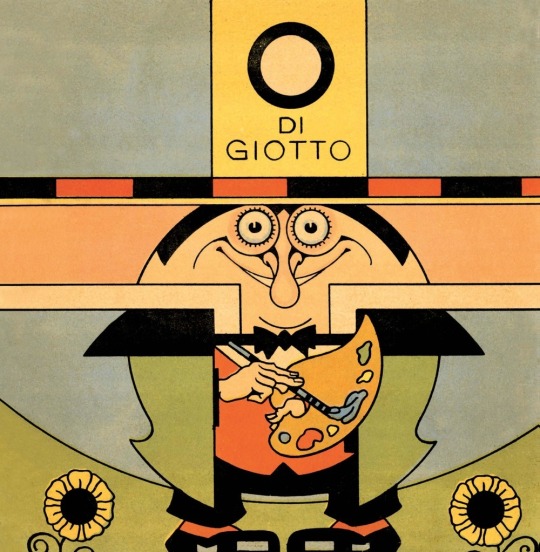
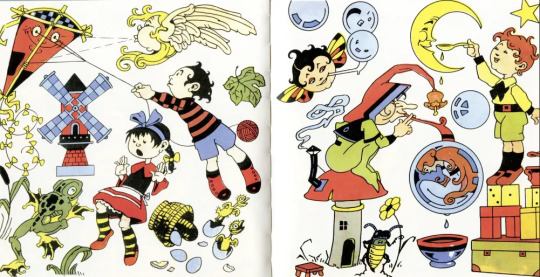

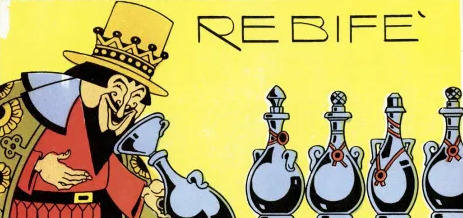
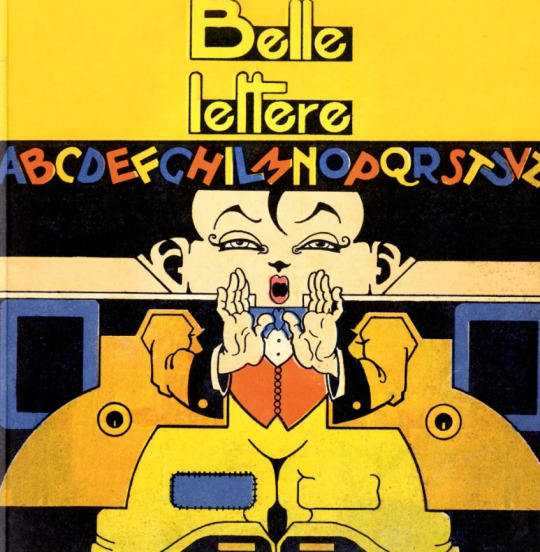
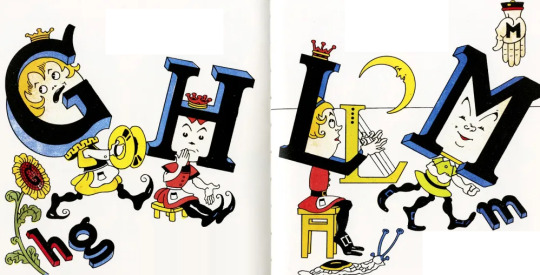

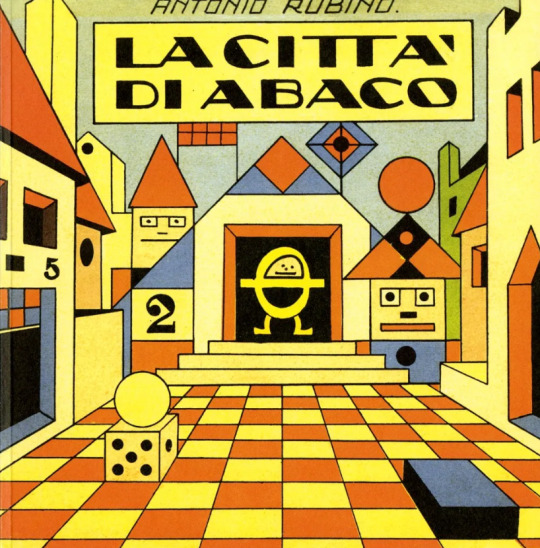
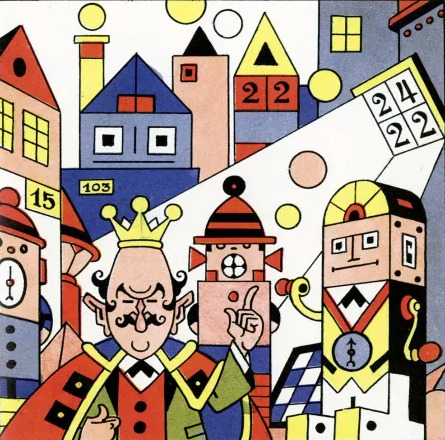


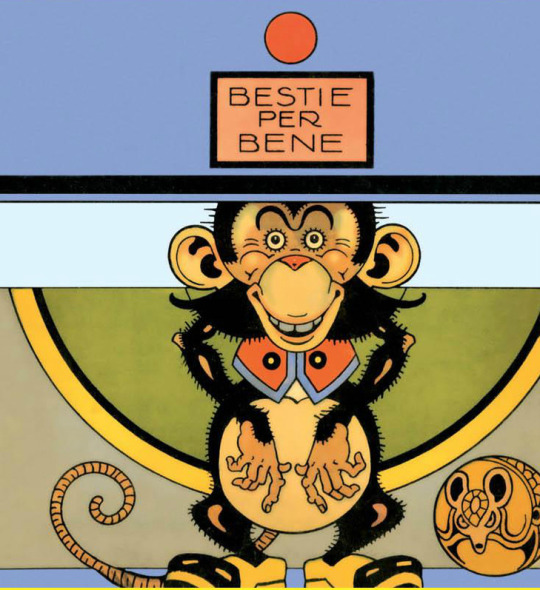
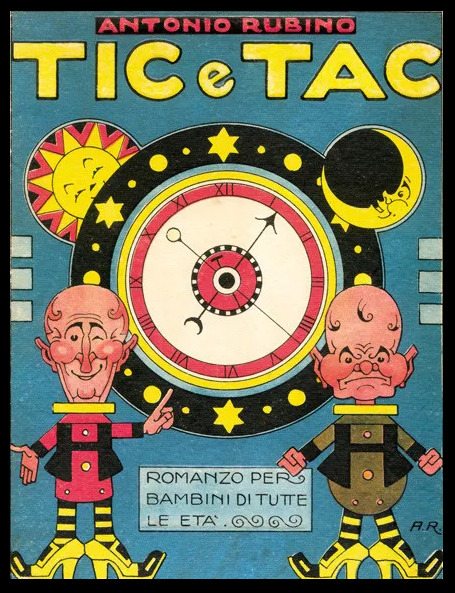



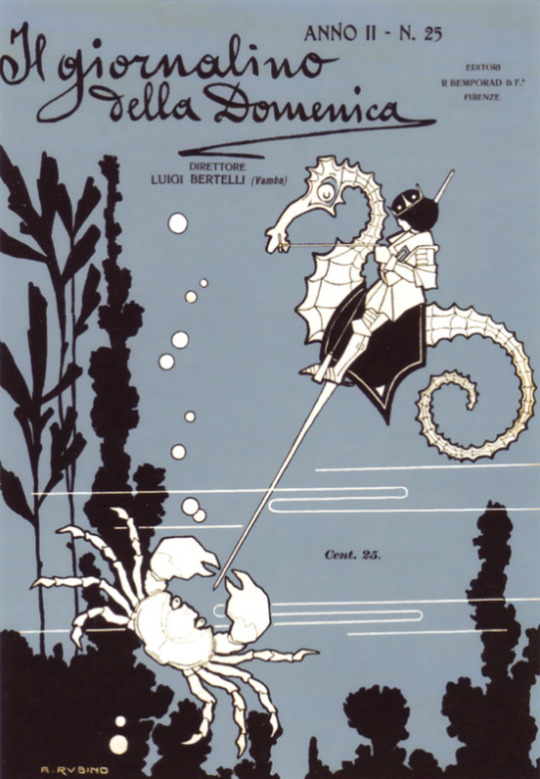

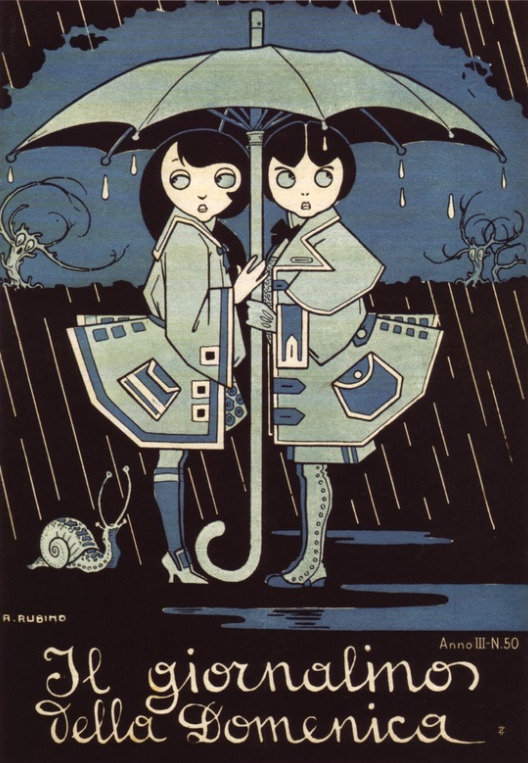


Antonio Rubino (Italian, 1880–1964) - painter, writer, illustrator, designer, and animator considered the father of Italian comics.
Covers and interior illustrations for The Toy School — a series of six color albums designed as a vade mecum, each album being responsible for introducing children, not without irony, to the things of life. There we find an alphabet book, a book of algebra and geometry, a bestiary, a chooser, a fable and an edifying tale. Of these six albums, O by Giotto is a visual dictionary of familiar objects but also a reflection on creation.
O DI GIOTTO (O by Giotto) - 1927
RE BIFÈ (King Bifè)
Belle Lettere (Beautiful Letters) - 1928
LA SCUOLA DI SCARABOCCHIO (The Scribble School)
LÀ CITTA DI ABACO (The City of Abacus) - 1928
IO ASINO PRIMO (Me, First Dunce) - 1930
BESTIE PER BENE (Well Behaved Animals) - 1928
other publications:
TIC E TAC (Tic & Tac) - a novel for children of all ages
VIPERETTA - 1934
undersea scene - sketch for fabric design
MONDO FANCIULLO (Child's World) - poster for his animated cartoon
Giornalino della Domenica (Sunday Newspaper) - Anno II #25 - 1907
Giornalino della Domenica (Sunday Newspaper) - Anno III #14 - 1908
Giornalino della Domenica (Sunday Newspaper) - Anno III #50 - 1908
LA NAVE! (The Ship!) - Here is the ship in stormy sea . . .
Quadratino (Small Square) - comic panel - 1910

Antonio Rubino Self-Portrait - 1930
www.printmag.com/daily-heller/futurist-wacky-antonio-rubino/
www.50watts.com/Daily-Rubino
#art by others#other's artwork#painting#illustration#publications#Antonio Rubino#tempera#comic#poster#animation
28 notes
·
View notes
Text

Antonio Augusto Rubino (1880-1964)
7 notes
·
View notes
Text
1001 Comic Books: A Request
If anyone has any of the following comic books/strips, be it your own scans or whatever, please put them on IA and/or send them my way...
Rock 'n' Roll Necronomicon by Savage Pencil
Quadratino by Antonio Rubino
Un semaine de bonte by Max Ernst
The Beast is Dead! by Victor Dancette and Edmond-Francois Calvo
Torchy in Heartbeats by Jackie Ormes
Mother Delilah / Boys' Ranch #3 by Jack Kirby and Joe Simon
Reves et Culbutes by Maurice Henry
Wayang Purwa by Saleh Ardisoma
Lifi \ Rhyphie by Sanho Kim
Salomon by Chago
Patty's World by Phillip Douglas and Purita Campos
Les Girafes by Guillermo Mordillo
Bella at the Bar by Jenny McDade and John Armstrong
Bahadur: The Red Bricks House by Aabid Surti and Govind Brahmania
Genius by John Glashan
Dori Stories by Dori Seda
Biff \ The Essential Biff by Mick Kidd and Chris Garrett
Untouchables by Lee Hyun-Se
Pee God #2 by Gary Panter and Joe Cotton
The Angriest Dog in the World by David Lynch
MAD Show-Stoppers by Mort Drucker
Sof' Boy by Archer Prewitt
The Marat/Sade Journals by Barron Storey
Palepoli by Usamaru Furuya
Nudl Nude by Youngsoon Yang
The Best of Bittercomix by Conrad Botes and Anton Kannemeyer
Comix 2000 by Jean-Christophe Menu
I'll Be Back Shortly by Frank Odoi
Powr Mastrs by Christopher Forgues
Rumble Strip by Woodrow Phoenix
Magic Mirror by Ed Pinsent
The Secret by Andrzej Klimowski
please
i'm desperate
#comics#comic books#1001 comics#wishlist#savage pencil#antonio rubino#max ernst#jackie ormes#jack kirby#joe simon#sanho kim#chago#guillermo mordillo#john glashan#mort drucker#frank odoi#comics i desperately want to read
0 notes
Text

Antonio Augusto Rubino - The Demon, c. 1900
21 notes
·
View notes
Text
2 shows in San Antonio this weekend. The crew copped an AirBnb. Excited to kick it with the SATX family and record some music. If y'all in the area come out and listen to some rap. <3
FRIDAY - FRIENDS OF SOUND RECORD STORE
SATURDAY - SNAKE HILL SOCIAL CLUB
0 notes
Text

Place: Temple of the Glorious Orb. If you're here to steal the big one, hope you have a way to carry it
Source: Antonio Rubino, illus. for Pippo Sizza Aviatore by Giuseppe Fanciulli (1910)
151 notes
·
View notes
Photo

Antonio Rubino from “Il Libro Di Bel Vedere” (1947)
21 notes
·
View notes
Text
Fumetti fascisti: Il Balilla
I Fumetti fascisti ebbero una grande fortuna durante il regime. Amati dai più piccoli, erano uno strumento di propaganda privilegiato. Tra questi, uno dei più famosi fu "Il Balilla" che fu pubblicato per tutto il ventennio.
Fumetti fascisti come strumento di propaganda del regime
Come diffusamente ci riportano i libri di storia, la propaganda fu l'anima del regime fascista. I vertici del regime sapevano che era assolutamente necessario far percepire alla popolazione che quanto stabilito e ordinato dal Duce Benito Mussolini fosse giusto. Questa necessità era espressa in ogni momento e attraverso qualunque strumento. La propaganda era diretta a tutti, uomini, donne, adulti, bambini con messaggi personalizzati.
Da ex maestro elementare, Benito Mussolini sapeva quanto potesse essere utile alla causa educare i più piccoli per ritrovarsi adulti già inquadrati. Così decise di arrivare a questa tenera età, oltre che con lo sport, anche con un'altra attività molto amata: la lettura dei fumetti. Il fumetto tra i più famosi del periodo fu senza ombra di dubbio "Il Balilla"
Il Balilla
Nato come "Giornale dei Balilla", iniziò le sue pubblicazioni il 18 febbraio 1923 come organo ufficiale dei gruppi Balilla. Il direttore responsabile era Defendente De Amici che si avvalse della collaborazione di Filiberto Scarpelli e Filiberto Mateldi. L'editore fu la Casa Editrice Imperia di Milano. A partire dal giugno 1925, il periodico uscì come supplemento del quotidiano Il Popolo d'Italia, organo del Partito nazionale fascista. Dal 5 giugno 1931, invece, divenne organo dell'Opera Nazionale Balilla. Il periodico era dedicato ai bambini mentre per le bambine fu pubblicata la rivista "La Piccola Italiana".
La rivista cambiò impostazione grafica diverse volte e poté contare sulla collaborazione di nomi quali: Antonio Rubino, Attilio Mussino, Edina Altara, Piero Bernardini, Enrico Novelli alias Yambo, Guido Moroni Celsi e Giovanni Manca.
Adelmo e Trippardello furono alcuni dei personaggi che trovarono posto sulle pagine della rivista insieme a Tiradritto e Gambalesta. Immancabili i bravi Balilla sempre pronti a riportare l'ordine dopo il caos, ad allontanare da Pinocchio, a suon di bastonate, il gatto e la volpe per poi far indossare anche al burattino l'uniforme e trasformarlo in un fascista perfetto.
Durante la guerra, De Seta disegnò diverse filastrocche con caricature del presidente americano Franklin Delano Roosevelt, detto "Rusveltaccio", del re Giorgio VI d'Inghilterra, ribattezzato "Giorgetto" e del suo primo ministro Winston Churchill, detto "Ciurcillone".
La rivista uscì tutte le settimane dal 1923 al 1943 con oltre mille numeri.
L'opera nazionale Balilla
L'Opera Nazionale Balilla (ONB) era un'organizzazione giovanile istituita durante il regime fascista in Italia. Fondata nel 1926, l'ONB prendeva il nome da Balilla, un ragazzo genovese leggendario per aver scagliato una pietra contro le truppe austriache nel 1746 durante l'assedio di Genova.
L'ONB era concepita come un'organizzazione paramilitare per ragazzi e ragazze di età compresa tra gli 8 e i 18 anni, con lo scopo di addestrarli fisicamente e mentalmente secondo i principi fascisti. I giovani membri dell'ONB venivano sottoposti a un rigido addestramento militare, che includeva esercizi di marcia, ginnastica, tiro al bersaglio e altre attività simili.
Oltre all'addestramento militare, l'ONB promuoveva anche l'ideologia fascista tra i giovani, insegnando loro valori come disciplina, obbedienza, lealtà al regime e senso di appartenenza alla comunità nazionale italiana. La propaganda fascista veniva diffusa attraverso le attività dell'ONB, che includevano adunanze, discorsi politici, eventi culturali e attività ricreative.
L'ONB era strettamente controllata dal Partito Nazionale Fascista (PNF) e svolgeva un ruolo importante nel controllo sociale e nell'indottrinamento dei giovani italiani secondo l'ideologia fascista. Dopo la caduta del regime fascista alla fine della Seconda Guerra Mondiale, nel 1945, l'Opera Nazionale Balilla fu sciolta e dichiarata fuorilegge, insieme al Partito Fascista e alle sue organizzazioni affiliate.
In copertina foto di tunechick83 da Pixabay
Read the full article
0 notes
Text




CHIESE DEL TERRITORIO DEDICATE ALLA MADONNA DEL CARMINE
La Chiesa parrocchiale della Madonna del Carmine di Formia (LT) è ubicata in Via Rubino, 125. A seguito della distruzione della II Guerra mondiale, la Chiesa fu ricostruita dall’impresa Giamminuti di Roma negli anni 1959-1960. Il progetto fu redatto dall’architetto Antonio Provenzano e fu benedetta il 4 ottobre 1964 dall’Arcivescovo Dionigio Casaroli. Fu eretta a parrocchia il 1 dicembre 1983 dall’Arcivescovo Luigi Maria Carli.
Per saperne di più: https://edicoladelcarmine.suasa.it/Formia.html
Per aggiungere informazioni: [email protected]
0 notes
Text
Good morning TUMBLR - March 14th - 2024
''Mr. Plant has owed me a shoe since July 5, 1971."
Bir Rebaa – Algeria - September 1993 - Dec. 1995
Part 2
CAMANDONA ANTONIO
Antonio was a NUOVO PIGNONE Engineer. He was sent to the Bir Rebaa projectto supervise the installation of the two gas turbines. Originally from Florence, he had been married for years to a Brazilian woman and lived in Sao Paulo, Brazil. I remember his sagacity and his typical ''Tuscanaccio'' jokes. During the adjustment of the turbine anchor bolts, with the steel wires stretched all over the foundation, he had invented a joke that everyone then repeated: ''WATCH OUT FOR THE WIRE!'' He was shouting it with that typical Tuscan accent, it was kinda exhilarating! He described life in San Paolo as very complicated: the entrance and perimeter of his condo - like all those who could afford it - was manned by armed guards, to avoid thefts and illegal occupations. I remember that he was hit by a ''cuddler'' and we had to help him when - during the installation of the central body of the turbine weighing 94 tons - the ground under the tracks of the American crane collaplsed, two turbine sections dropped suddenly and almost on impact ' with the concrete foundation.
ENG. RUBINO.
Small, thin, with thick nerd glasses, Iranian wife in tow: this was the AGIP Project Director. A true tyrant who revealed sadistic aspects as the project progressed and certain milestones were not met as per schedule.
A day Rubino called Torello on the radio saying that ''He was at site in the tank area and that I can't see any greenery around here'' (he was referring to the fact that was nobody from our side, since we wore green shirts and trousers). It was 2.00 pm on a harsh July day, and the temperatures was 55* C - therefore it had been decided to start working earlier in the morning, and take a long break around midday (which Rubino had approved) Another day the Director ordered to backfill by sand the trenches of the electrical and instrumental cables, even though the cables were intertwined and not yet ''combed' (a jargon expression to say arranged with the right spaces between them) with the risk of interference from the signals. All this in an attempt to speed up the works.
Later in the years, I would find Rubino at the head of the Kashagan project in Kazahstan, at least at the early days of the project. He was then dismissed from AGIP following the assignment of the contract worth 280 million USD to Petrofac for the supervision of the works of the Karabotan plant. Rumors were talking about possible bribes in the above contract award.
In Bir Rebaa Rubino ordered to built a stable resembling a Tyrolean chalet for two horses he brought from Hassi Messaoud. Hay was transported daily to the site to feed the horse, by AGIP airplane! Rubino and his acolytes enjoyed shooting with bows and arrows, and when once Rubino dropped an arrow on the ground, Mr. Cascinotto (one of the most servile AGIP guy) rushed to pick it up, exclaiming:
Oh God…!
Rubino replied: ''Don't exaggerate Walter… just call me an Director…''
Rubino gave an order that in the same canteen where everyone ate, AGIP employees were served at the table, while we - mere mortals - collect food from self service.
WALTER CASCINOTTO
Of Venetian origin, he was one of the AGIP Supervisors who - following their 28/28 shift - we used to see coming and going from Italy 3 times before it was our turn to return for holidays. After long reflections, we concluded that the reason because AGIP personnel shift was 28/28 was that they could not stay more than 28 days in the desert without doing absolutely nothing. A evening during dinner, in the mood for confidences, Walter told us that he had joined AGIP thanks to the recommendation of the then Patriarch of Venice, Cardinal Luciani. Just to say how things were (and still are) in Italy's Corporation Companies.
A Friday Walter organized a on an expedition to visit a nearby abandoned Foreign Legion fort. He proudly showed us one of the first portable GPSs, which AGIP naturally already had supplied. We left in convoy, with 4 jeeps, following Walter who led the way. After several comings and goings and stops, in which our ''guide'' got out of the Toyota, repositioned the GPS and then indicated ''over there'' but then the fort was not found, we climbed on foot up a very high dune, and saw the location was just a few hundred meters away: we had gone around in circles for 2 hours thanks to the indications of the legendary Walter, the desert fox.

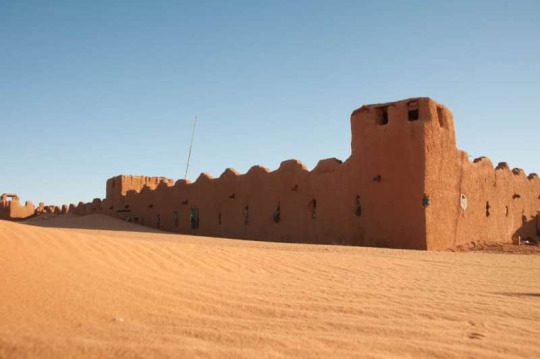
Former Foreigh Legion fort - Grand Erg Oriental - Algeria.
Pieraccini Renzo – Site Manager SAIPEM
Renzo was one of those characters who contributed to make SAIPEM great. He was origanny from Predappio like our Fiorello, he hid an iron will behind a good-natured character. With typically Romagna cunning, he had gained the trust of the suspicious Project Director Mr. Diamante.
This fact contributed first of all to facilitating SAIPEM's task, and then to making the Company earn considerable amount of extra works (and money). Pieraccini's personality and technical knowledge obscured Morello's role to such an extent that after a certain time Diamante turned to him directly, effectively bypassing SNAMPROGETTI, and making our presence on site almost useless.
QUADRATINI GIOVANNI
Recently hired by SAIPEM, Giovanni was Pieraccini's Deputy - it was clear that the guy had an edge, and was destined for a brilliant career in the Company. He suffered enormously from Renzo's methods, and never missed an opportunity to complain about it publicly. Over the years he would first become SAIPEM manager for Nigeria and West Africa. Then even CEO of SAIPEM Construction Division.
Having fallen into disgrace with the Algeria affair, he was ''degraded'' to head of North America and shortly thereafter resigned to move to a Norwegian company, a competitor of SAIPEM.
GENTILINI GIOVANNI
Known with the nickname ''Ignoranza'', he was the typical representative of that generation who entered SAIPEM as an excavator or shovel operator, and then rose to the role of Construction Site Manager. Umbrian from Terni, he had the typical ''accent' of that region. Certain outings due to the lack of knowledge of French were unforgettable, perhaps on the radio, where we could all hear:
Monsieur Pieraccini les bagash sont dans la chambre! (which translate in Italian looks like ''the hook****rs are in the room, while he meant ''luggage are in your room)
Or during a meeting with the Client:
Prim: SAIPE' travaill tres bie' (First SAIPEM works very good)
Second but not last: we take a yellow highlighter......……
His job was at stake when the ground gave way under the American crane while lifting the turbine, an accident that could have had catastrophic consequences. The ruthless Engineer Diamante asked Pieraccini to fire Gentilini on the spot - Pieraccini did it.
MUSELLI LUCIANO
Welding supervisor, known as ''il Madonnaro'' (Madonna's draftman) nickname given to him by Franceschin due to the colored chalks that Luciano always carried in the numerous pockets of his jacket to write on the pipes. I will find Luciano again in Kazakhstan and then, once he retired, as manager of the Arte & Cocina restaurant in Fuengirola, Costa del Sol.
RACHID BENFLITI
Project Director on behalf of SONATRAC (Local partner of AGIP) he alternated with Eng. Diamante, who in all respects managed the project. I developed a good relationship with M. Rachid, to the point that he told myself various background stories about his life. He was an Algerian who graduated in Moscow, at the famous Lumumba University for Foreigners. Disenchanted, he had long since stopped believing in the ''Algerian revolution'' - one day we climbed onto a dune overlooking the site, it was sunset and as if he was speaking to himself he said:
Why are we putting all this junk metal together here? Within 20 years everything will be rusty, wouldn't it be better to build a new Las Vegas here? That' kind of business is endless!
Once he told me that one day - he had recently arrived in Moscow as a young student - he noticed that there were long queues outside shops, including those selling basic items - and then he asked himself a legitimate question :
If they don't have enough bread for themselves (the Russians) how can they think of helping us Algerians?
During a trip between Hassi Messaoud and Bir Rebaa I asked how he became Project Director.
''I had been in Algiers for two years now, I was working at the headquarters of SONATRAC (the Algerian national oil & gas company) and one day Monsieur Jilani – the General Director – called me to his office.
Yes Benfliti – he tells me – the time has finally come for you to reach Bir Rebaa construction site! You're happy?
Yes M. Jilani I'm happy.
But now – continued Jilani – a big problem arises: you go to the site, and who can replace you here at the headquarters? So who better than you can suggest the characteristics of your possible replacement?
Well M. Jilani' – I replied – my possible replacement here at the Headquarters must have two main characteristics.
And what are they? – Jilani said with an interested look.
This individual must like two things: reading newspapers and drinking tea (or coffee)
Jilani' remained speechless - ''Could please explain why you telling that, Benfliti?
Easy to say Hamed – I replied – because in the two years I spent here at the Headquarters I did nothing but read newspapers and drink tea''.
HAMED ABBOUCH
Site Manager of the Algerian Civil Works Subcontractor - He called himself ''Gilbert'', a name he had assumed during his long stay in France. A really smart guy, given the bad approach his subordinates were taking to the project, one day had a sign put up at the entrance to their offices – the sign said:
The use of the following words is strictly prohibited within these offices:
Entammer (to begin) peut etre (maybe) demain (tomorrow) Si Dieu veux (God willing) on verra (we'll see)
KAMEL TABTI
Known as ''le Kalkul'' (''Calculations'' he was the topographer of the Algerian Civil Works Company. A truly talented person, both from a professional and human point of view. Counting on his wife's dual nationality, and exasperated by the civil war that devastated the country during those years, he managed to emigrate to France. He settled in Strasbourg, where he found employment as a security guard at the European Parliament.
ABDUL RAZZAK
A kind young man in charge of the materials testing laboratory.
PALOMINO RAMIRO
AGIP had made available a Pilatus, a 6-seater Swiss-made aircraft, for the transport of expatriate personnel from Hassi Messaoud to Bir Rebaa. A sandy landing strip, 800 meters long, had been prepared near the Bir Rebaa field, suitable for safe take-off/landing of the plane. The plane was also used for periodic reconnaissance of the area around the construction site, to monitor any movements of terrorist groups.
Two pilots took turns at the controls of the small aircraft. One of these, Palomino, was of Colombian origin. One day he told us how he had made the decision to move to Spain, where he settled with his family. Ramiro lived in Medellin and worked as a pilot for a Colombian oil company. A evening while returning home, he was stopped in front of his house gate by two individuals who offered him a job as a pilot of one of the planes that local drug traffickers used to transport cocaine to the United States. One or two trips a week, $15,000 a trip. Palomino politely refused, and one of the individuals said:
Well, I'll see you back here tomorrow evening, think about it and then you'll give us ''correct'' answer… ah… before we leave.… does your daughter Alejandra always go to the Colejo Departamental Femenino De Belén Sofía? And they left without waiting for the answer.
Then – Palomino told us – I entered my apartment and told my wife:
-Sophia let's pack our bags, tonight we are all leaving for Spain, my relatives in Barcelona will help us.
But why so suddenly ?? Replied my wife.
Yes Sophia, there is no time to waste – and I explained to her what was behind my decision.
Those kind of people - he continued - once I refused their offer - would not have hesitated one day, and my daughter would have been kidnapped and killed.
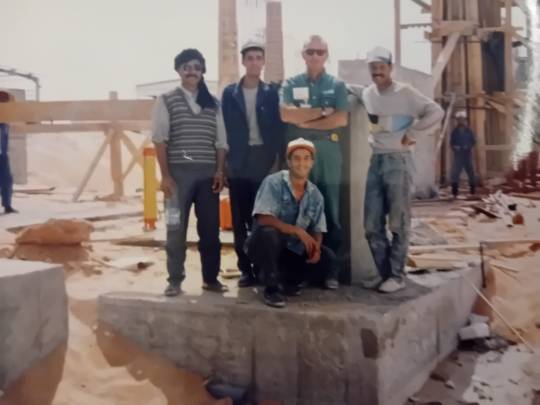
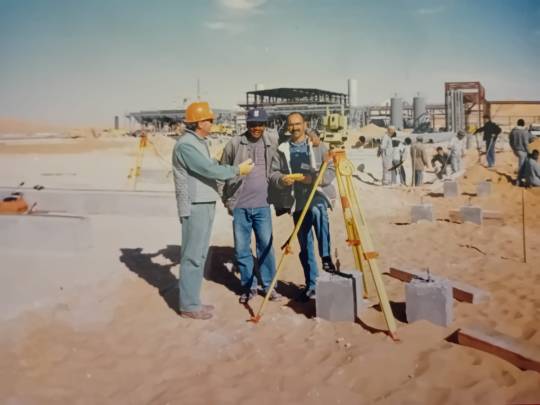
BIR REBAA LIFE
The project had begun, the area affected by the works - with some difficulty - had been covered with a material that was locally called ''tuff''. It was a gray material, which was found in pockets about 7-10 meters deep under the sand. Once abundantly wet, it became very hard and resistant, allowing the movement of construction vehicles, which was impossible in the fine sand of the Sahara.
Kick Off Meeting
After making various requests, finally one afternoon in January 1994 the Kick Off meeting was held at site offices - Kick off meeting marks the official start of project activities. It must be said that Site Manager Torello's French knowledge was very poor.
He tried to understand what was being discuss during the meetings, and continually asked me for translation/clarification. At a certain point, Torello wanted to speak, and what he said - in front of local Algerians - was not remembered as a good thing.
Torello: ''Oui…mais je entend que se fam comme sa…la production vas baiser…baiser…baiser… (accompanying the sentence with a gesture of the hand in which he wanted to make clear that by doing the way in which Sub Contractor intended would have caused ''production dropped…dropped…dropped - but in fact what Algerians understood was '' production would go to fuck itself'')
Naturally all the Algerians present were stunned, and since they knew that I spoke French, 16 eyes simultaneously turned towards me with questioning looks, as if to say ''what did he say''?
I had to explain – smiling sheepishly – that Mr. Morello was worried about the prospect of a drop in production if certain remedies and procedures were not adopted……
GENDARMERIE NATIONAL
We had therefore obtained a small garrison of the Gendarmerie Nationale to guard the camp and the site. They guarded the camp 24/7, and a sort of sentry box had been positioned at the camp gate. It was half past one on a July afternoon, the temperature was around 50°C, we were taking a siesta in the rooms. Suddenly we heard a burst of machine gun fire, and many jumped out of the containers to see what was going on!.
A soldier guarding the gate had fainted under the sun, falling with his hand on the trigger, so a series of shots were fired which pierced the water tank. (Luckely not the diesel tank.......). The guy was rescued and taken to the infirmary, where Doc took care of him.
Mr. D'ADIGE - SAIPEM President.
It was a few days before August 1994, and one morning we saw the Pilatus going in circles over the site at low altitude: the SAIPEM President had come to visit. After an hour we were all in the meeting room, where Eng. D'Adda gave his speech:
Well…I saw from the plane that the beach is large…umbrellas…few (they were those of the welders) and then hot…very hot…all this should push you to complete the project as soon as possible, so as to be in time to move to the next Hassi R'Mel project! Happy Ferragosto everyone!!
And he left just as he came.
ROTATION TRIP TO ITALY - August 1993
The situation in Algeria in August 1993 was such that we expatriates - on return trips for holidays - flew first to Hassi Messaoud with the Pilatus, then to Algiers with a domestic flight, and stayed overnight at the Mercure hotel. The next day we boarded the Alitalia flight to Rome. That's what I did in that very hot August.
Everything went well in the first part of the trip: quiet flight to Hassi Messaoud, a couple of hours of waiting and then an Air Algerie Boeing flew me and a colleague to the Houari Boumedienne in Algiers. The next morning, between checks in and security measures that turned out to be useless, we were finally on the airport bus that would take us under the plane from the terminal. And then pandemonium happened: we heard shots, bursts whose origin we didn't understand!!
With quick wits - and also with our hearts beating at hundreds beats x minute - we threw ourselves on the floor of the bus, covering our heads with hand luggage! Outside, the battle raged, with security forces reacting, albeit belatedly. After an endless time - we were not in a position to say whether an hour or a few minutes had passed - we heard the anti guerrilla armored vehicle sirens, the so-called ''Ninja' special forces had entered in force in the parking lot in front of the airport terminal. They were firing wildly at a couple of vehicles which were later identified as the ones terrorists had used to enter the airport. The shots and the screeching of the cars lasted a few more minutes, while we remained there until the police entered the bus, shouting that everything was over! They made us return to the terminal, while on the apron the airport workers tried to clean up all the wreckage left by the fighting.
After about 2 hours - during which not a single was pronunced by anybody - we were told to get back on the bus which this time left immediately towards the plane waiting near the take-off runway. We climbed the ladder quickly, without the usual recognition of luggage on the ground, before it was loaded into the hold of the plane. Which took off as soon as all the passengers were seated and their seat belts fastened.
During the flight we drank half a bottle of Hennessy cognac each, and woke up when the plane touched the Rome's Fiumicino runway.
RETURN TO ALGERIA – September 1993
The holidays were over, and reluctantly I had to return to Algeria. At Huari Boumedienne airport a surprise awaited me: the domestic flight operated by Air Algerie was carried out with a brand new Boing 757 leased from Colonel Gaddafi's Libyan Arab Airlines.
The plane's livery had been repainted, but the original colors of the Libyan Company could still be seen. After an hour's flight and a soft landing on the battered Hassi Messaoud runway, when it was time to get off the plane, the unexpected happened: the airport does not have an adequate ladder that reaches the level of the Boing's door! Standing under the merciless Sahara sun, we were already starting to sweat, when a 'genius guy' from ground services came up with the solution: three wooden pallets were provided at the top of the ladder platformin order allowed us to go down. Any case, with a small jump we all got down to the ground.
TORELLO AND PALEOLITHIC ARROWS.


The 21 days of vacation went by quickly – no one ever explained to me why vacation days pass so quickly, while when you're at work time seems to slow down. After the first 3 or 4 Fridays, almost all of us had lost interest in the search for Neolithic arrows. Only Torello continued to go searching for, while me and my colleagues preferred to rest in what was the only free afternoon of the week. That day no one of us wanted to accompany Torello who, violating the safety procedures that he himself had approved, set off alone in the Land Rover Discovery, a car suitable for '''out of school''''hopping in Western town'' but certainly not for off-roading in Western Sahara. The sun was about to set, and we were watching a tennis match between colleagues when Morello arrived: ON FOOT!

Land Rover Discovery 1990 Model.
Quickly, quickly…let's take a couple of Land Rovers…let's go …
Well… where is Discovery Giuseppe?
Later… I'll explain as I go along…
Once we set off, Torello began to indicate the direction: to the right…straight…to the left…it's not far…
We traveled for about an hour, during which Torello explained that the Discovery had sunk into the sand - he had tried everything, but the car had sunk even mire. Luckily for him, a patrol from the Gendarmerie Nationale had passed by, giving him a ride to the camp. We finally arrived in a sort of depression (this was where the arrows and ostrich eggs were usually found) and we saw the Discovery: it was buried till windows level!
It was clear that Torello - enraged at having been covered up - had done exactly what should never be done in these situations: accelerate the engine to the max, causing the car sunk in the soft sand. We then positioned the two Land Rovers in front of the Discovery,tide up the cables and attempted a maneuver that immediately proved to be impossible: the car didn't make the slightest movement.
It's late now, we have to get back before dark - We will come tomorrow with a D6 bulldozer, it will make a ramp, remove the sand in front and back side of the Discovery and then drag it out of the hole easily - I said.
We returned to camp, with Torello not uttering a word the entire way. If one of us had done what he had done that day, Morello would have kicked him out of the project and perhaps even from the Company. - The next morning during breakfast he had already forgiven himself and was making idiotic jokes about what he was happened – the idea that it could have been much worse had never even crossed his mind.
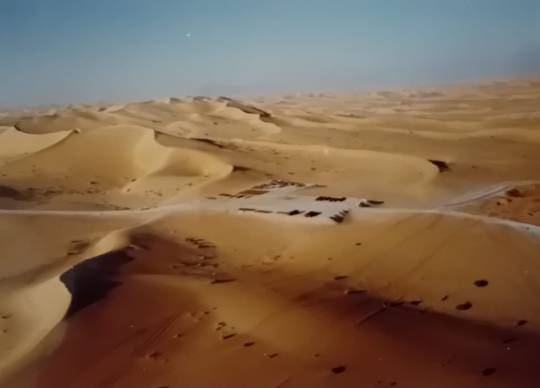
1 note
·
View note
Text

Antonio Augusto Rubino (1880-1964) “Rime Piccoline” Bibliotechina De La Lamada interior illustration (1914) Source
3 notes
·
View notes

















